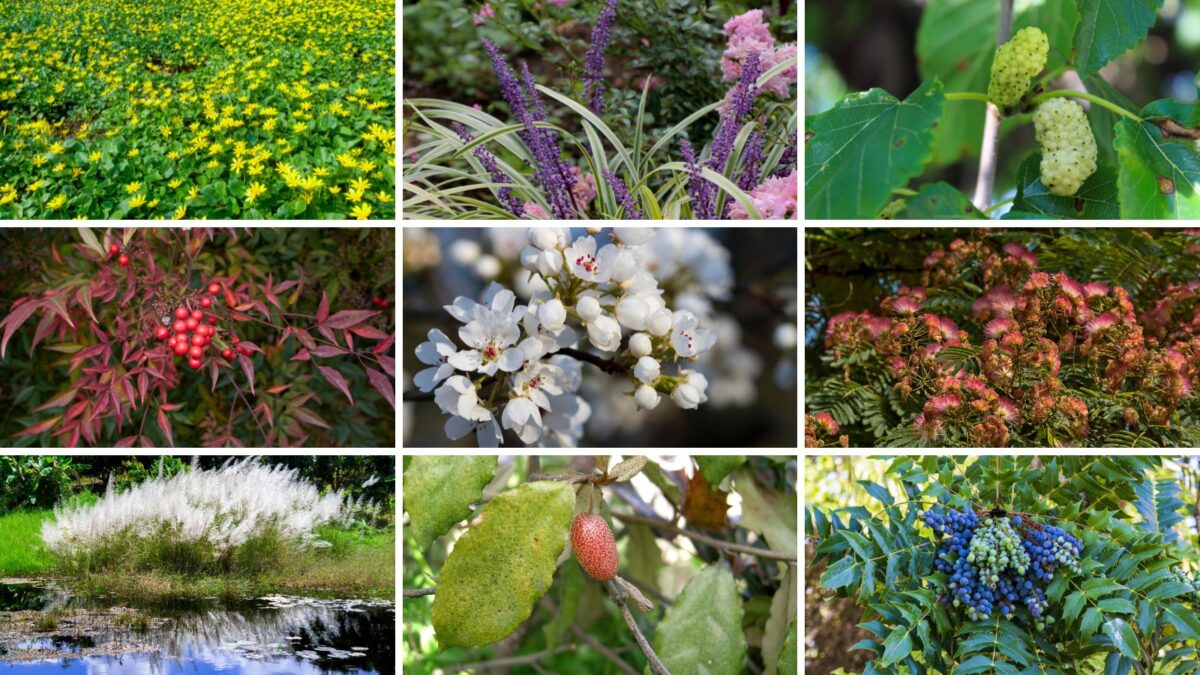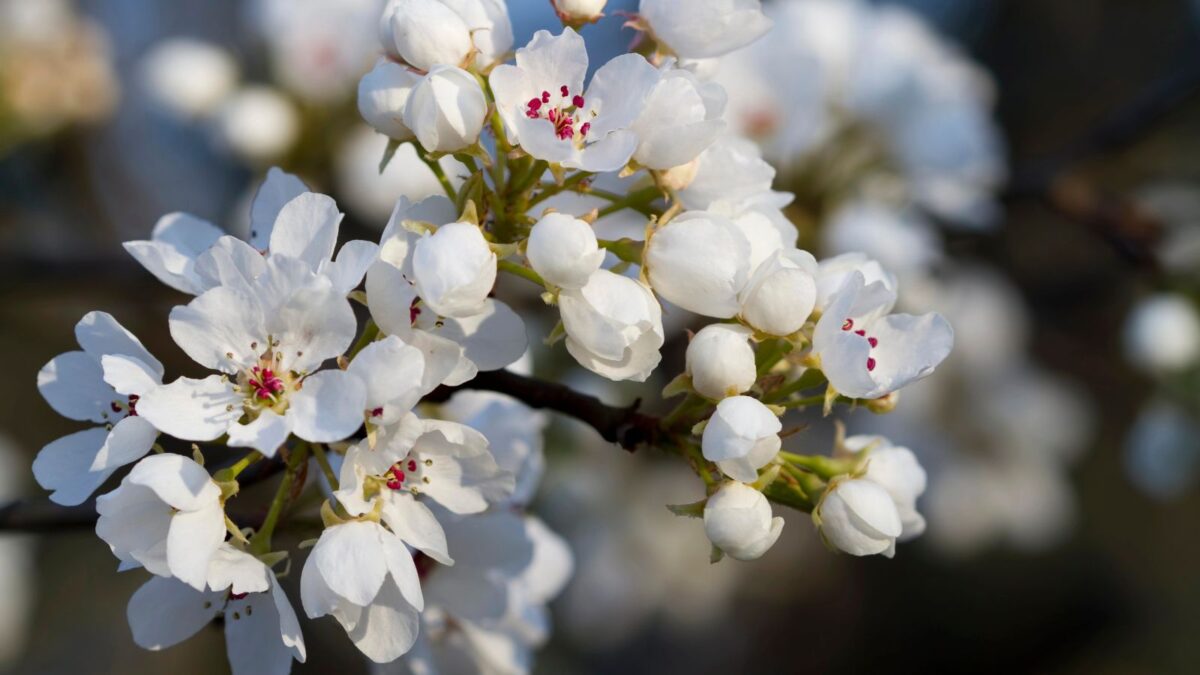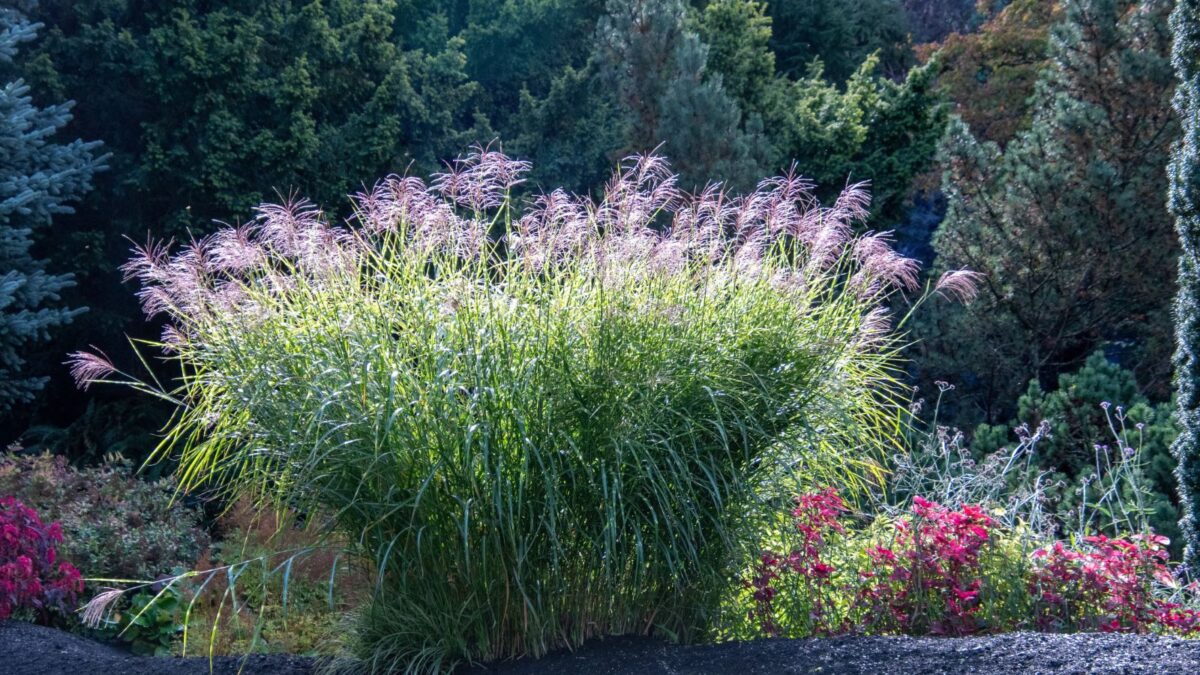They threaten endangered species, reduce wildlife habitat, impact outdoor recreation, and affect the economy. And they can be found in your own backyard. Invasive plants in South Carolina have so many negative effects on so many different things, and fighting them can feel like a daunting task. Some of these aggressive plants can easily be found for purchase at big-box garden centers and other plant nurseries. You might even be surprised to discover one or two of the well-established plants in your garden are invasive in South Carolina.
So what do we do? Is there hope? How do we begin tackling such a big problem? As with many things, it begins with awareness. Start by learning how to identify some of the most common invasive plants in South Carolina yards, so you can recognize one when you come across it.

Invasive Plants in South Carolina

If you discover that one of the plants in your yard is invasive, the next step is to remove it. But make sure you look up proper methods for that specific plant first, as many invasives can regrow from stumps or even root or stem fragments. And if you find invasive species while plant shopping, kindly ask the store to stop selling these harmful plants.
The upside of this whole endeavor is that you do get a great excuse to go plant shopping — you’ll want to replace any invasive plants in your garden with native plants! Each description in the following list includes recommendations for alternative native plants.
1. Callery pear (Pyrus calleryana)

The Callery pear is a popular shade tree due to its dense, pyramidal shape and masses of spring flowers. The tiny white blossoms bloom before the tree leafs out, and many people find their odor unpleasant. As the flowers decline, the alternate, ovate leaves emerge, glossy and dark green on top with pale undersides and wavy margins. The small, round, yellow-green to brown fruits often hide in the foliage. The branches sometimes have a thorn at the tip and can easily split off as a result of weak crotches.
Eastern redbud (Cercis canadensis) is a beautiful native flowering tree, and southern sugar maple (Acer saccharum subsp. floridanum) makes for a great shade tree.
2. Chinese silvergrass (Miscanthus sinensis)

Growing up to an impressive 10 feet tall, Chinese silvergrass is a densely bunched perennial grass still sold as an ornamental. Its wide, narrow leaves have pale midveins. In summer, plumed, fingerlike panicles emerge to wave above the arching foliage and mature to silver or pink in the fall. Not only does it spread aggressively by rhizomes and wind-dispersed seeds, but Chinese silvergrass is also extremely flammable.
Though a bit shorter, native pink muhly grass (Muhlenbergia capillaris) puts on a stunning late-season show, while switchgrass (Panicum virgatum) provides a slightly taller alternative.
3. Fig buttercup (Ranunculus ficaria)

Also called lesser celandine, fig buttercup is an herbaceous perennial groundcover. It likes moist, shady sites and is easiest to identify in the early spring, when bright yellow, eight-petaled flowers dot the carpet of foliage. The glossy, dark green, heart-shaped leaves have a smooth margin and die back after flowering as the plant goes dormant in early summer. After the flowering season, look for small bulbils in the leaf axils and somewhat fig-shaped tubers on the roots.
Native marsh marigold (Caltha palustris) closely resembles fig buttercup but with five flower petals and serrated leaves. Green and gold (Chrysogonum virginianum) also makes a lovely substitute.
4. Kudzu (Pueraria montana)

Known as the “vine that ate the South,” kudzu is perhaps one of the most infamous invasive plants in the US. Its woody vines can grow as much as a foot in a single day, sprawling and climbing to completely cover shrubs, trees, and even buildings. Look for alternate, compound leaves with three leaflets, typically with three lobes. Lavender, pea-like flowers bloom in long racemes throughout the summer, followed by flattened, hairy seed pods.
American wisteria (Wisteria frutescens) has beautiful purple blossoms in spring, while trumpet vine (Campsis radicans) blooms throughout the summer with yellow to red tubular flowers.
5. Leatherleaf mahonia (Berberis bealei)
A multistemmed evergreen shrub, leatherleaf mahonia grows up to 10 feet tall with scarce branching. Its pinnately compound leaves have stiff, spiney-toothed leaflets. The lemon-yellow flowers bloom in late winter, followed by somewhat grape-like fruits that mature to blue in late summer.
Plant possumhaw viburnum (Viburnum nudum) for a deciduous shrub with white flowers and pink to purplish-black berries or inkberry (Ilex glabra) for evergreen foliage, greenish-white flowers, and black fruits.
6. Mimosa (Albizia julibrissin)

Mimosa, or silk tree, is unfortunately well-loved for its showy, fragrant flowers that bloom in clusters of vivid pink silky threads from about May to July. Its pinnately compound leaves give the tree a feathery look and will close if touched and at night. The long, flattened seed pods mature in late summer. A medium-sized deciduous tree, mimosa grows anywhere from 10 to 50 feet tall.
Alternative native trees include fringe tree (Chionanthus virginicus), with its spring flowers and summer fruits, and sourwood (Oxydendrum arboreum), which has fragrant summer blooms.
7. Monkey grass (Liriope muscari, L. spicata, Ophiopogon japonicus)

Though it often refers to liriope (L. muscari, L. spicata), the common name “monkey grass” also applies to Ophiopogon japonicus, or dwarf mondo grass. All three species are invasive in South Carolina. These clump-forming evergreen perennials have strappy, grass-like leaves and grow to just six inches (dwarf mondo grass) or up to 18 inches high (liriope). While dwarf mondo grass produces insignificant racemes of tiny, white, bell-shaped flowers, liriope sends up attractive spikes of small, white to violet blooms. Both have blue to black berries.
Allegheny spurge (Pachysandra procumbens) is a native evergreen ground cover with fragrant spring blooms, while a low-growing native sedge like Cherokee sedge (Carex cherokeensis) makes a nice grass-like alternative.
8. Nandina (Nandina domestica)

Nandina, or heavenly bamboo, is an upright evergreen shrub that is not only invasive but also toxic to humans, pets, and wildlife. In fact, birds who consume too many of its bright red berries can die from cyanide toxicity. It has a cane-like habit with compound leaves that turn red to bronze in spring, blue-green in summer, and purplish-red in autumn. Small white flowers bloom in panicles in late spring, and the clusters of vibrant red berries ripen in fall, persisting into winter.
Similar native shrubs include winterberry holly (Ilex verticillata) and red chokeberry (Aronia arbutifolia).
9. Privet (Ligustrum sinense, L. japonicum)

A semi-evergreen, thicket-forming shrub, privet is commonly used in privacy screens. It has opposite, elliptic, dark green, waxy leaves and spreads rapidly via root suckers and bird dispersal of the seeds in its black autumn berries. In spring, tiny white flowers bloom in small but malodorous panicles.
Carolina cherry laurel (Prunus caroliniana) is an excellent native alternative, as is yaupon holly (Ilex vomitoria).
10. Thorny olive (Elaeagnus pungens)
A sprawling, vine-like evergreen shrub, thorny olive uses is thorns to climb up to 30 feet high on other plants and structures. It has shiny green, oval leaves with wavy margins and silvery undersides. Axillary clusters of fragrant, white, bell-shaped flowers bloom in fall, and tiny reddish-brown drupes ripen in spring.
Carolina jessamine (Gelsemium sempervirens) is a native evergreen climbing vine or bushy ground cover with fragrant yellow flowers, and Florida leucothoe (Agarista populifolia) makes a good alternative shrub.
11. White mulberry (Morus alba)

Although mulberries are a delightful late-spring treat, the white mulberry tree is unfortunately invasive in South Carolina. The leaves of this midsized tree may be unlobed, mitten-shaped, or three-lobed, and yellow-green flowers bloom in early spring. On female plants, white to purple blackberry-like fruits ripen in June. To distinguish from the native red mulberry, look for smaller, three- to four-inch leaves with larger, rounded serrations and a glossy upper surface. Unfortunately, the two can hybridize.
Red mulberry (M. rubra) is the obvious choice for a similar substitution, though pawpaw (Asimina triloba) is another great native fruit tree if you would like something less messy.
If some of these descriptions sound suspiciously familiar, you might want to take a closer look at some of the plants in your yard! You might be surprised to find that you’ve been nurturing a harmful invasive species. It can be hard to part with some of these plants if they’ve become cherished, but you can reward yourself for taking action by going plant shopping for a wonderful native alternative!
Plant These South Carolina Natives Instead

If you’re looking to upgrade your landscape, try some of these natives: it will make it a lot easier to maintain. This South Carolina native plants list will give you some ideas for great plants for your landscape.





